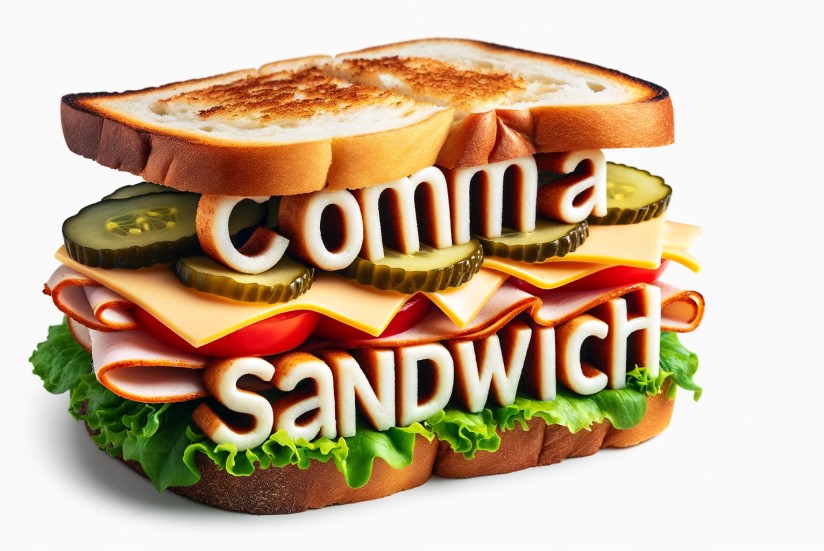Have you ever heard of the comma sandwich rule? This comma rule is often misunderstood and misused, but mastering it can help you add information to a sentence without disrupting its flow or overall meaning.
What Is a Comma Sandwich?
The comma sandwich is another name for a free modifier, a type of parenthetical phrase that uses a pair of commas to add non-essential information to a sentence without changing its meaning.
To think of this another way, the sentence’s added details (the sandwich filling) lie between the more important parts of the sentence (the bread).
While some people may argue that the filling of a sandwich is the best part, you can’t actually have a sandwich without bread. To help you remember this writing rule, think about how filler in writing is not necessary. So, the filling in the comma sandwich is extra but not necessary to convey the meaning of the sentence.

Using the Comma Sandwich Rule Correctly
Not all sentence elements that are housed between commas count as a comma sandwich. Commas can also separate items in a list, connect independent clauses, and create a short pause in a sentence, to name a few.
Here’s an example of what may look like the comma sandwich but is not:
- “I wanted to go for a walk, but it started raining, so I stayed inside instead.”
This sentence correctly uses commas and coordinating conjunctions to connect three independent clauses:
- I wanted to go for a walk.
- It started raining.
- I stayed inside.
The coordinating conjunctions “but” and “so” link the clauses, and the commas are used to separate them appropriately.
If we follow the rules of comma sandwiches, then “it started raining” would be non-essential and could be removed from the sentence. If we do that, we’d be left with:
- “I wanted to go for a walk, so I stayed inside instead.”
As you can see, that sentence makes no sense when we remove its “filling.” That’s because “it started raining” is essential to the overall meaning of the sentence. This is how we can be sure that the sentence does not contain a comma sandwich.

However, this sentence does contain a non-essential element:
- “I took my car, a red Pontiac, to the shop for repairs.”
The phrase “a red Pontiac” adds detail to the sentence but isn’t necessary to get the overall point across. Simply saying, “I took my car to the shop for repairs,” tells the reader what they need to know.
Therefore, this sentence contains a comma sandwich. The phrase “a red Pontiac” serves as the filling between the phrases “I took my car” and “to the shop for repairs.”
Comma Sandwich Example
Here is another example of how to use the comma sandwich in a sentence:
- “My cat, a massive Maine Coon, took an afternoon nap by the window.”
The phrase “a massive Maine Coon” serves as non-essential information. The reader doesn’t need to know that the cat is a large Maine Coon to understand that a cat is sleeping by the window. However, by including these additional details, the reader can better picture in their minds what type of cat is napping.

Enhance Your Writing With Comma Sandwiches
Using the comma sandwich in your writing can make it more dynamic and engaging. Give it a try and see how much it enhances your work!
For more on using commas and other punctuation, check out our punctuation tips. We truly believe that mastering these rules will help you become a stronger, more confident writer.


Leave a Reply